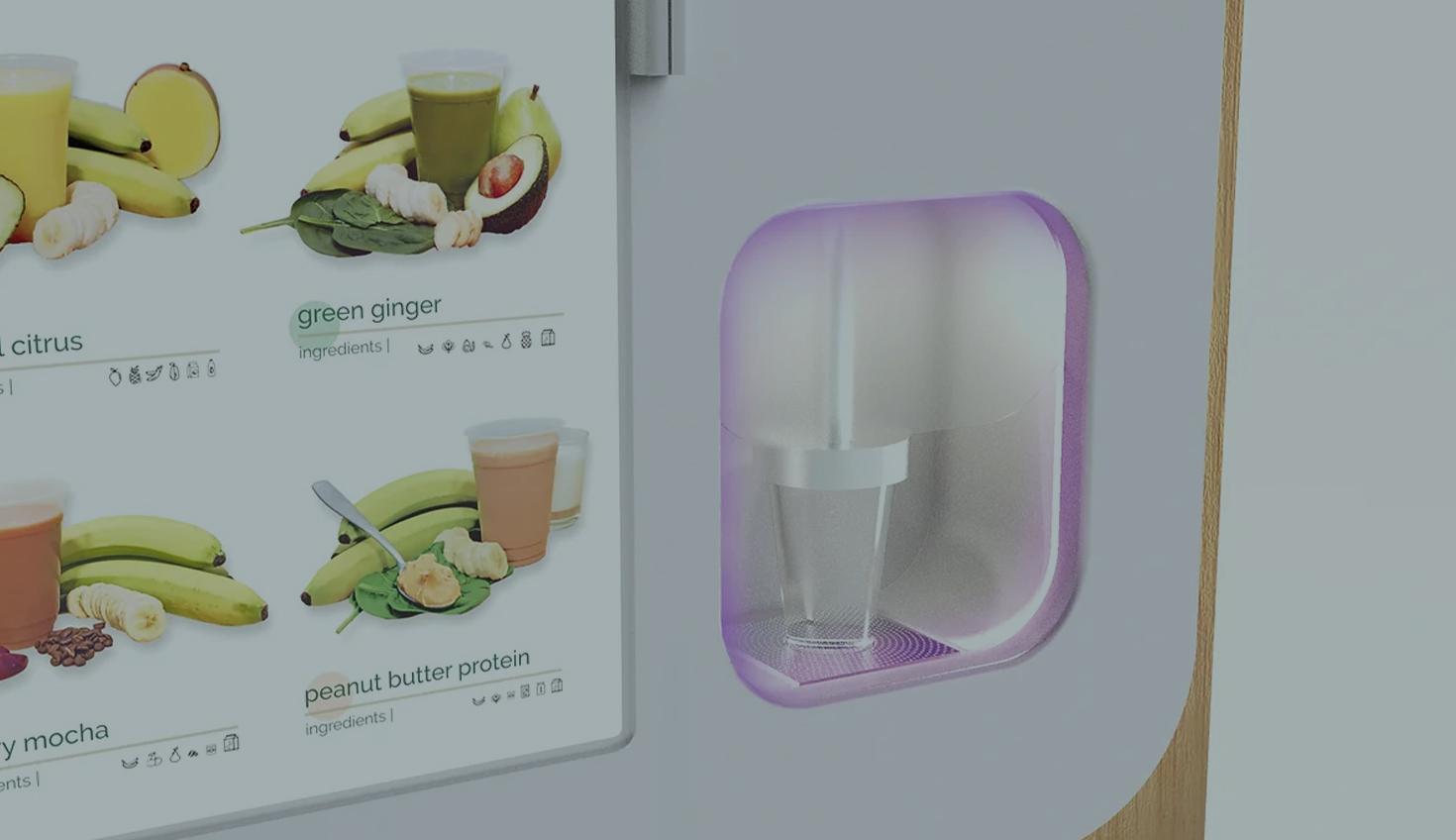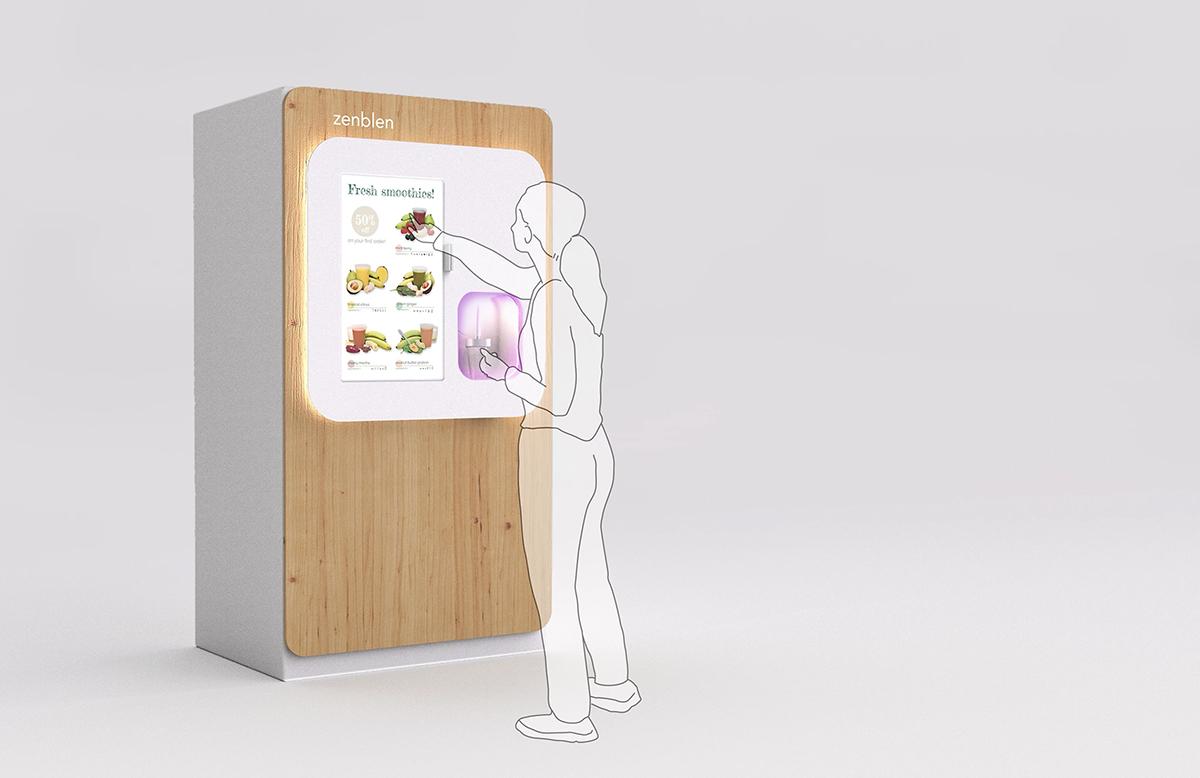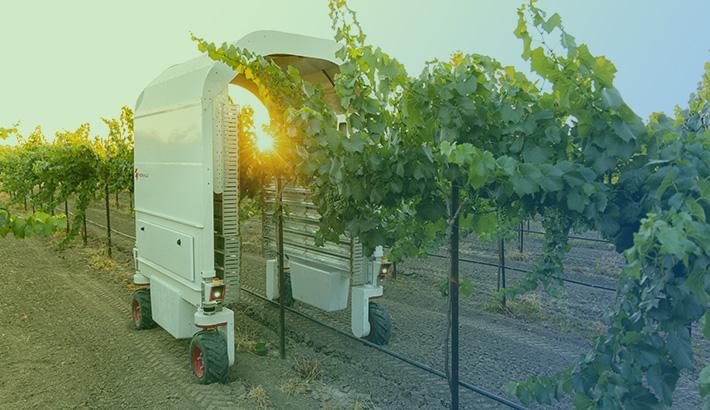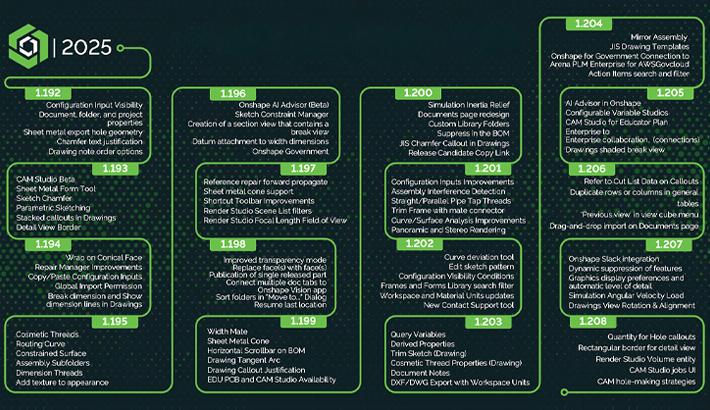
05:18
Want a smoothie from an automated kiosk?
Zenblen hopes the allure of a healthy snack — or a healthy meal for some — will lead colleges, libraries, and businesses to make room for its machine, powered by innovative CAD software for startups. With a few touches of a screen, a customer can choose from a variety of drinks consisting only of fruits, vegetables, and nut milk and then watch the ingredients blended before them in the innovative robotic smoothie bar.
While the drink-making might appear to be a simple creative process to consumers, the Zenblen kiosk requires complex engineering on the inside, integrating knowledge found through advanced CAD software for startups to ensure precision and efficiency.
“There’s a lot of equipment in there to take a cup through all these different processes,” Zenblen Lead Engineer Dan Bernacki said. “It all has to work right for people to come back again.”

With the Touch of a Button, a Smoothie at the Ready
Zenblen was founded in Chicago by Tom Zhang, the CEO of the startup. Bernacki joined the company after the first Zenblen kiosk had already been designed by a contractor. He and a few employees created the next version, a kiosk that wasn’t fully automated but efficient enough to make smoothies. They wanted to move fast so they could place a machine in a customer-facing setting and collect data on the user experience. That data — the details of what customers liked and didn’t like about buying a smoothie from the machine — now informs the most recent version.
The kiosk features a large touchscreen that lets customers choose one of five smoothie recipes, all curated by a nutritionist: mint berry, green ginger, peanut butter protein, green ginger, orange “hypothesis,” or strawberry banana. They can add pea protein, whey, and other proteins to a selection. After a customer makes a touchless payment with their digital device, the “magic in the machine starts,” Bernacki said.
“If you choose strawberry banana, for instance, the cup will move to the area where it will dispense strawberry and banana behind the scenes. Then, the cup moves to an area that’s visible to the customer, and liquids are dispensed. After that, the cup is dropped into an area where everything is blended. When the drink is ready, a customer can walk away and enjoy the smoothie, or they can stick around and watch a mechanism drop down and clean the machine for the next drink.”

The Complexity of Making Something Simple
While all that mixing and dispensing might look like “magic,” complicated engineering instructs the machine how to respond to a customer’s prompts and blend a drink to taste like one that people make on their kitchen counters.
To accomplish this, Bernacki and team had to design a kiosk with several rotary axes that move simultaneously and reach certain positions to complete the many steps of the drink-making process. Throw into that mix the many different permutations created by a customer (drink flavor, additional proteins), and the kiosk’s machinery had to be not only nimble in a compact frame but also intelligent.
Just as Zenblen customers would come to expect a steady, always-ready smoothie machine, Bernacki knew he had to find the same attributes in a cloud-native CAD and PDM package. SOLIDWORKS initially seemed like a logical choice; Zenblen contractors used the brand. But he said Zenblen didn’t meet the criteria to join the company’s startup program. And SOLIDWORKS was “too expensive” for a startup that couldn’t afford to divert money from hiring more engineers.
“Collaboration is very important to us, but the investment needed to get SOLIDWORKS to a collaborative state, to have that PDM aspect, as well the necessary servers, was very costly,” Bernacki said. Even though he at first didn’t envision a partnership developing elsewhere because of his contractors’ use of SOLIDWORKS, Bernacki nonetheless stayed in touch with Onshape.
It turned out Onshape was just the “flavor” Zenblen needed all along. The company qualified for the Onshape Startup Program, an initiative that provides Zenblen and other qualifying hardware startups access to Onshape Professional, a fully cloud-native CAD and PDM package with integrated simulation and rendering tools.
“We have the system-level design, and now even our contractors are working in Onshape,” Bernacki said, highlighting the collaborative power of Onshape, the chosen CAD software for startups. “We just love that collaborative aspect. I have a remote engineer who’s working three hours away, but we feel like we’re chatting right next to each other in the same room because we can do that through our browsers.
A Startup’s Best Friend: A CAD Package that Delivers
Through the Onshape Startup Program, the Zenblen team solved the system-level design challenge that could have made smoothie making anything but smooth. The process of mating parts in assemblies has been as simple and efficient as blending a drink, thanks to Onshape.
“Onshape helps us see how the different systems integrate with each other,” Bernacki said.
“Because it’s fast and has tools that can position the different rotary axes, we’re able to have a lot of insight on how things work together — and that's very important. I wasn’t able to get that out of SOLIDWORKS unless I put in the time to do that, having mates where the motion is built in. SOLIDWORKS has that, but the UI is not as friendly as Onshape’s is.”
Design work has also gone smoothly with FeatureScript in Variable Studios and Part Studios in Onshape, as well as Bernacki’s use of Xometry Inshape Instant Quote App. “It’s really cool that I can quickly put something out to Xometry to get an idea of a part cost. I can almost get live feedback on whether I should change this or cost that.”
A startup environment offers freedom to experiment and fail, but eventually, pressure mounts to deliver a product that sparks change in an industry. It all must be done with less money and fewer employees than a proven brand. Bernacki and his team were up for the challenge, but he couldn’t have imagined getting there without the help of the Onshape Startup Program.
“What we're going for is a healthy option that’s available 24/7 for consumers,” he said. “The kiosk is the vehicle for delivering that, so we have to get it right. I’m happy with the decision we made and look forward to continuing to work with Onshape.”
The Onshape Startup Program
Equip your team with full-featured CAD, built-in PDM, and real-time collaboration in one system.
Latest Content

- Case Study
- Robotics
Saga Robotics: Powering the Future of Sustainable Farming with Cloud-Native Onshape
01.05.2026 learn more

- Blog
- News from Onshape @ PTC
Onshape at CES 2026: Where Innovation Meets the Show Floor
01.05.2026 learn more
- Blog
- News from Onshape @ PTC
Onshape’s Top 10 Best and Newest CAD Design Software Features of 2025
12.23.2025 learn more



